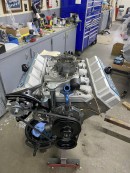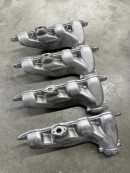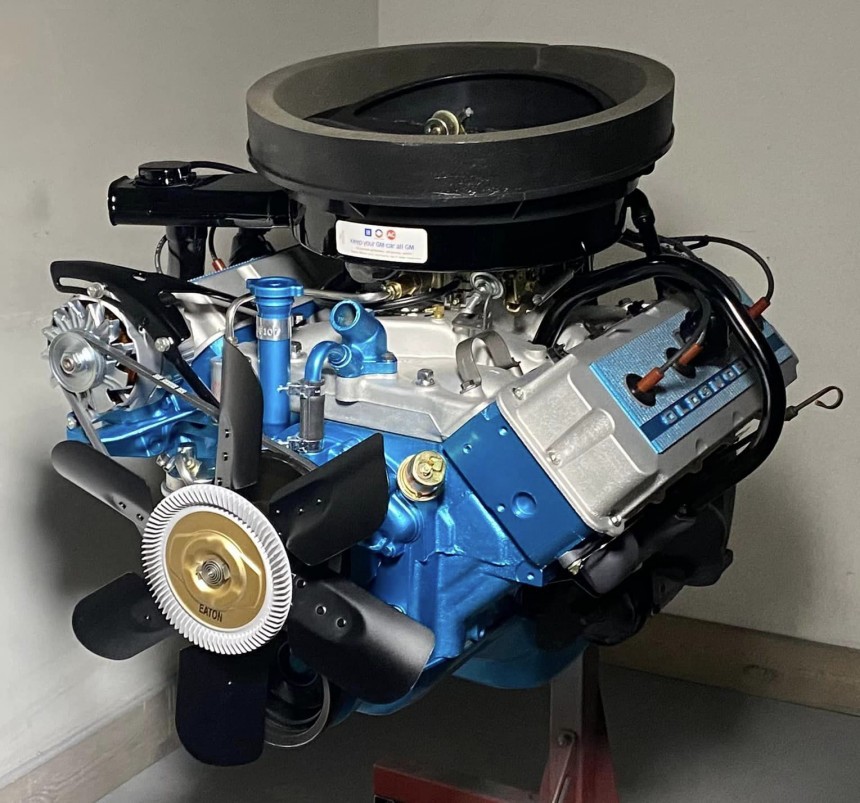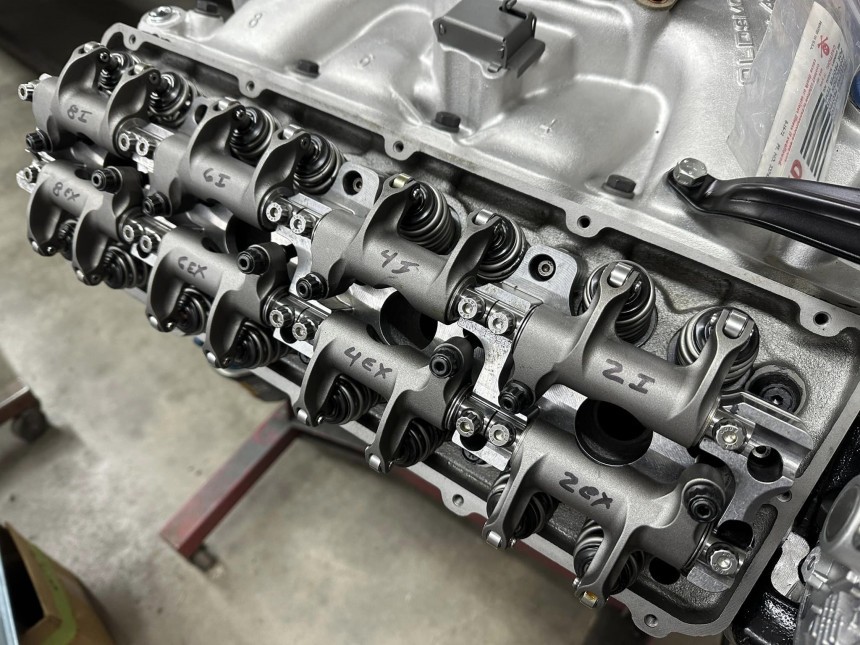Remember the formidable 1970 Oldsmobile 442 with its monstrously over-powering and over-torquing 455-cube V8 rated at 560 hp and 540 lb-ft? If you say anything but ‘No,’ you’re lying – the car never made it into production. The engine, however, was built – albeit as an experimental high-performance unit, and it never made it past that point. But what if it would have? Then, we would have had something like the car in this story.
Back in the late sixties, when the Street Hemi was the name to beat, Oldsmobile had an idea—one so wild that it was approved for development: a 32-valve 7.5-liter V8 that could leave anyone in the dust even before starting up, a puncher so hard-hitting that it would have rendered any competition virtually obsolete.
The motor chosen as the foundation of this horsepower enormity was Oldsmobile’s trusty 455 V8 – with several mods to make it apt for the job. The main feature of the engine, codename W-43, was its valvetrain: two for intake and two for exhaust – per cylinder, all actuated by a single in-block camshaft. I don’t want to go into all the mechanical details of it - Hot Rod magazine published a great story in May 1971, soon after the whole affair was mothballed by GM brass.
Yup, the motor to end the horsepower wars was killed in its cradle – it was too expensive, too complicated, and too out of line to see the light of internal combustion (at least, that’s what the suits over at corporate decided). Two units were built for testing, and both should have been scrapped once the W-43 was shut down.
How did the motor end up on a website specializing in performance parts trade? Well, once the project was axed in 1970, several wise men from Oldsmobile had the inspiration to get the engine to Petersen Publishing Company editors, hoping to make the pages of Car Craft, Hot Rod, and Motor Trend magazines. As a side note, the engine wasn’t a running unit but more of a mock-up, a hollow shell best suited for photo shoots, a collection of internals that composed the W-43.
Once the PR stunt was over, the Olds reps politely invited the journalists to get rid of the big motor in any way they deemed befitting. Fate had it that none of the scribes had the heart to take the big lump to the crusher. Someone took it home, and its history is shrouded in mystery for the next four decades. Around 2007, twin brothers James and John Kryta found it, bought it (for half the asking price), and put it away for a while.
Overall, it took a team of twenty volunteers some three thousand hours to restore the big V8 from boat anchor to running powerplant. The missing parts had to be fabricated—the heads and valve covers were cast after painstaking design, reverse engineering, and countless machining sessions. The other missing components fell into the same paradigm of ‘We’ll make them again.’
But what’s so special about hits engine, anyway? At the time, it was dubbed a ‘hemi’ due to the shape of its combustion chambers. It was, in fact, not a hemispherical-head engine but a PentRoof design developed to accommodate the large 1.75-inch intake valves and 1.375-inch exhausts (44.45 mm x 34.925 mm). It doesn’t sound all that impressive at first glance.
In the W-43’s case, the latter was between .400 and .500 – 10.16 mm and 12.7. thus, the intake curtain was 4.4 square inches, and the exhaust 4.32, or 28.38 square centimeters over 27.08 sq cm). After completing the engine, the Kryta pistonheads put it on the dyno, and the outcome was astounding.
Given that the big engine was designed as an undersquare to keep over-revving at bay (and thus cap the valve spring load on the cam, pushrods, lifters, and all other valvetrain components), the dyno returned a jaw-dropping 560 hp at 6,000 RPM and 540 lb-ft at 3,600 RPM (568 PS, 732 Nm). Had this made it into production and under the hood of an Olds muscle car, it would have earnestly deserved its nickname, ‘The Killer.’
Mind you, when Oldsmobile engineers tested it during development, the big 32-valve 455-cubic-inch V8 produced ‘only’ 440 hp, with a very mild cam and a quartet of dual-barrel Weber carburetors on top of it. In 2024, the Kryta build sports a single four-barrel 750-cfm Rochester Quadrajet—see it in the video below, boasting its glorious uniqueness at the Muscle Car and Corvette Nationals.
The monster engine is linked to a wide-ratio four-speed manual box and a 3.91 aluminum W-27 differential. The car is resprayed in its original Sebring Yellow shade but sports red stripes instead of the black ones it left the factory with. However, the red ones were available, so this car is every bit a period-correct masterpiece (the W-43 notwithstanding, of course).
Unfortunately, the owner can’t showcase the motor’s sound because he ‘has no gasoline in the tank,’ much to the disappointment of pretty much everyone, including Lou Costabile, the frantic classic car detective who filmed the gem at MCACN. Subscribe to his YouTube channel for more treasures like the one featured in the video below.



































